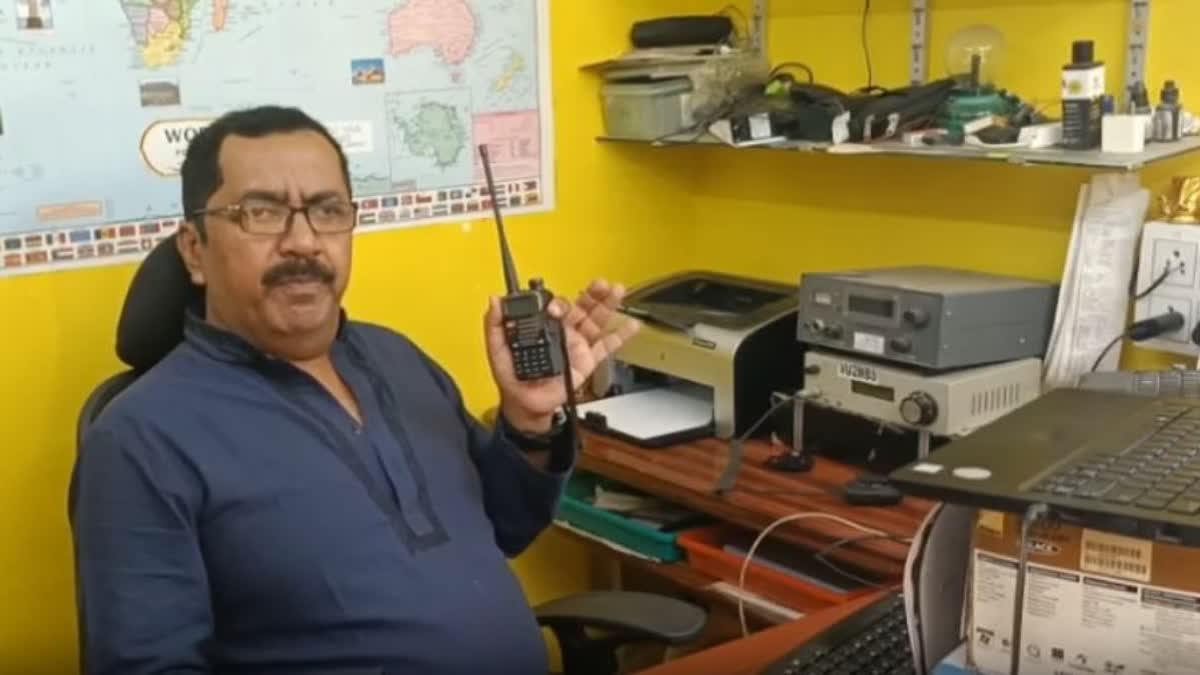Koraput: Ham radio, a two-way radio communication method dating back to the early 20th century, continues to remain a crucial tool for emergency communication during natural calamities. Known for their resilience, ham radio operators—or “hams”—use radio frequencies to send and receive messages, often when conventional communication infrastructure fails.
However, for cyclone Dana, the network was not put to use given that the communication network was functioning for a large part during and after the landfall. "It comes to use when all other channels of traditional communication networks fail," said Sunil Biswal, a ham operator in Sunabeda, Koraput district.
Amateur Radio popularly called ham radio is a popular hobby and service that brings people, electronics and communication together. People use ham radio to talk across town, around the world, or even into space, all without the Internet or cell phones. It's fun, social, educational, and can be a lifeline during times of need.
“Despite the prevalence of mobile and internet networks, ham radio provides a unique way to connect, build friendships, and foster cultural exchanges worldwide,” Biswal added. In Odisha, while there are around 30-35 licensed ham operators, only 10-12 are actively engaged in the network. A total of 21 HAM radio stations had been set up in vulnerable areas of the State.
Biswal highlighted ham radio’s critical role during recent cyclones, such as Phailin, when he collaborated with Odisha Disaster Rapid Action Force (ODRAF) in Bhubaneswar’s cyclone control room to coordinate relief efforts.
The HAM radio was launched in Odisha way back in 2009. The then chief minister Naveen Patnaik had stated that the aim is to strengthen the village community, so that they can face disasters during the first few hours. A HAM Radio Communication network for the state was launched in 2012 to mark the 10th year of the super cyclone.
Ham radio operators from Bengal and Andhra Pradesh established radio communication when one radio station was opened in OSDMA control room at Rajiv Bhawan in Bhubaneswar, Puri and Kendrapara before Phailin struck.
With advances in modern technology, ham radio has incorporated digital and satellite communication modes, further enhancing its capabilities. “This technology operates independently of power grids and cellular networks, making it indispensable during emergencies,” Biswal added. He looks at a promising future for ham radio, with growing interest among the younger generation. “Ham radio will continue to play a crucial role in disaster response and community outreach,” he said.



